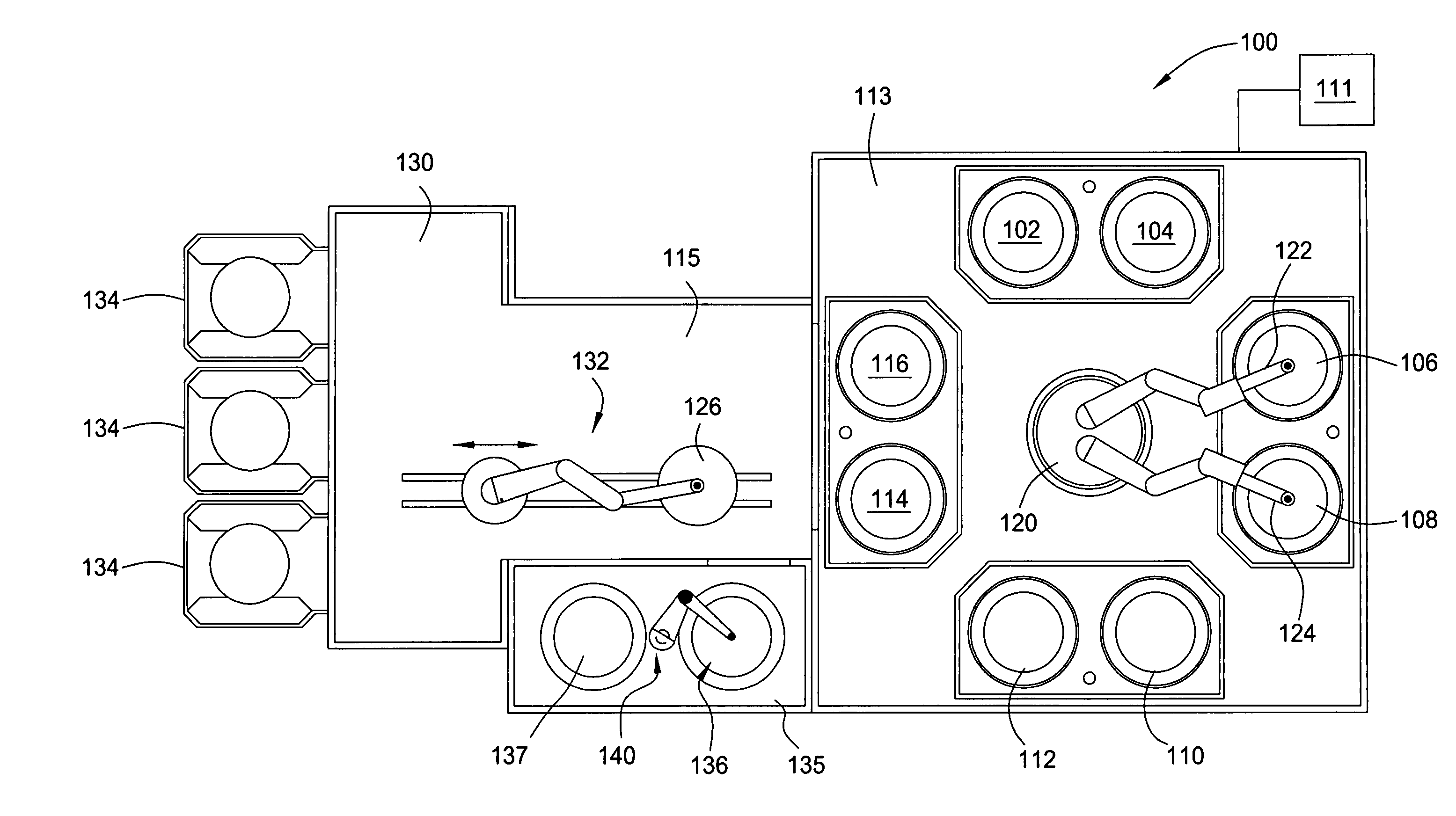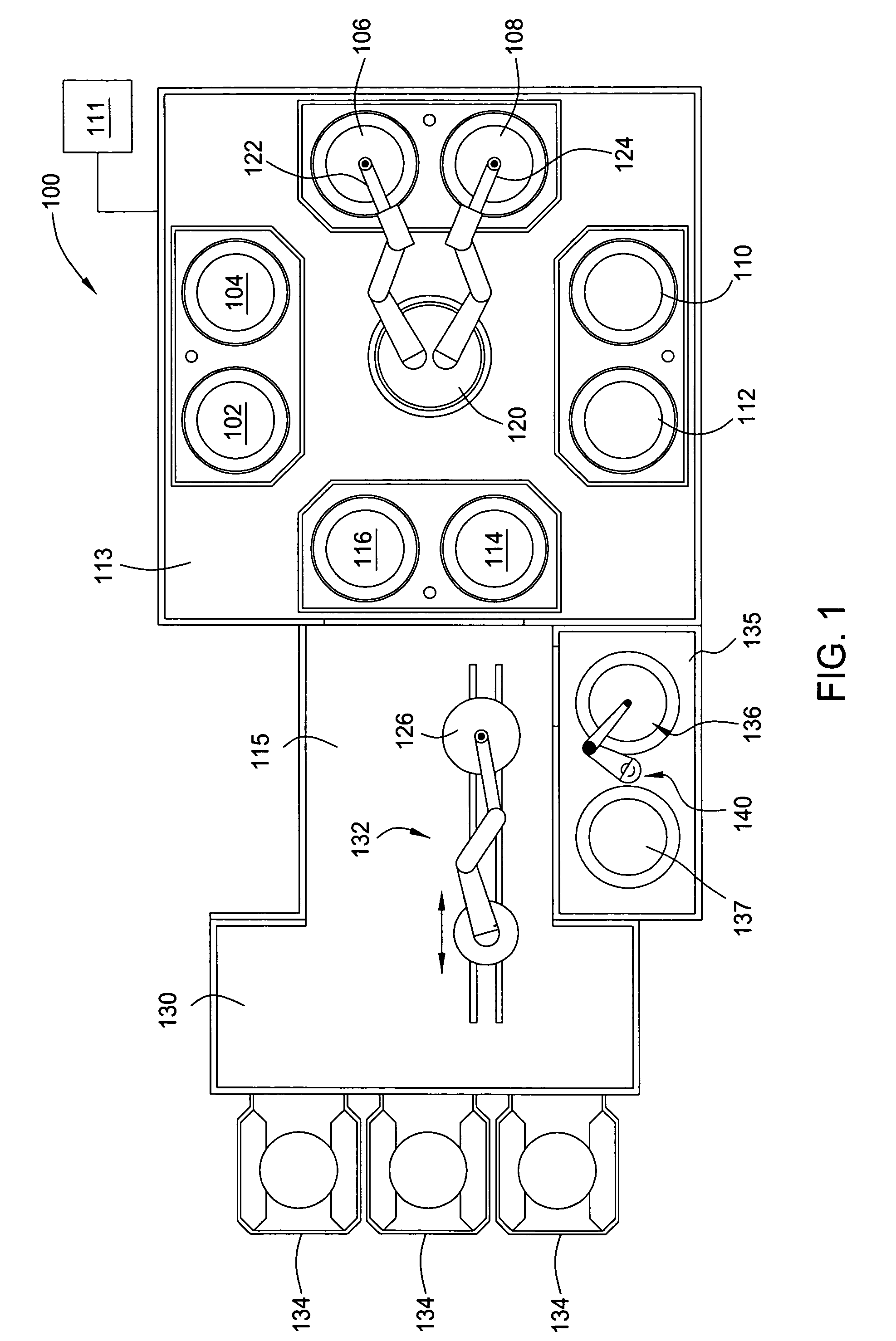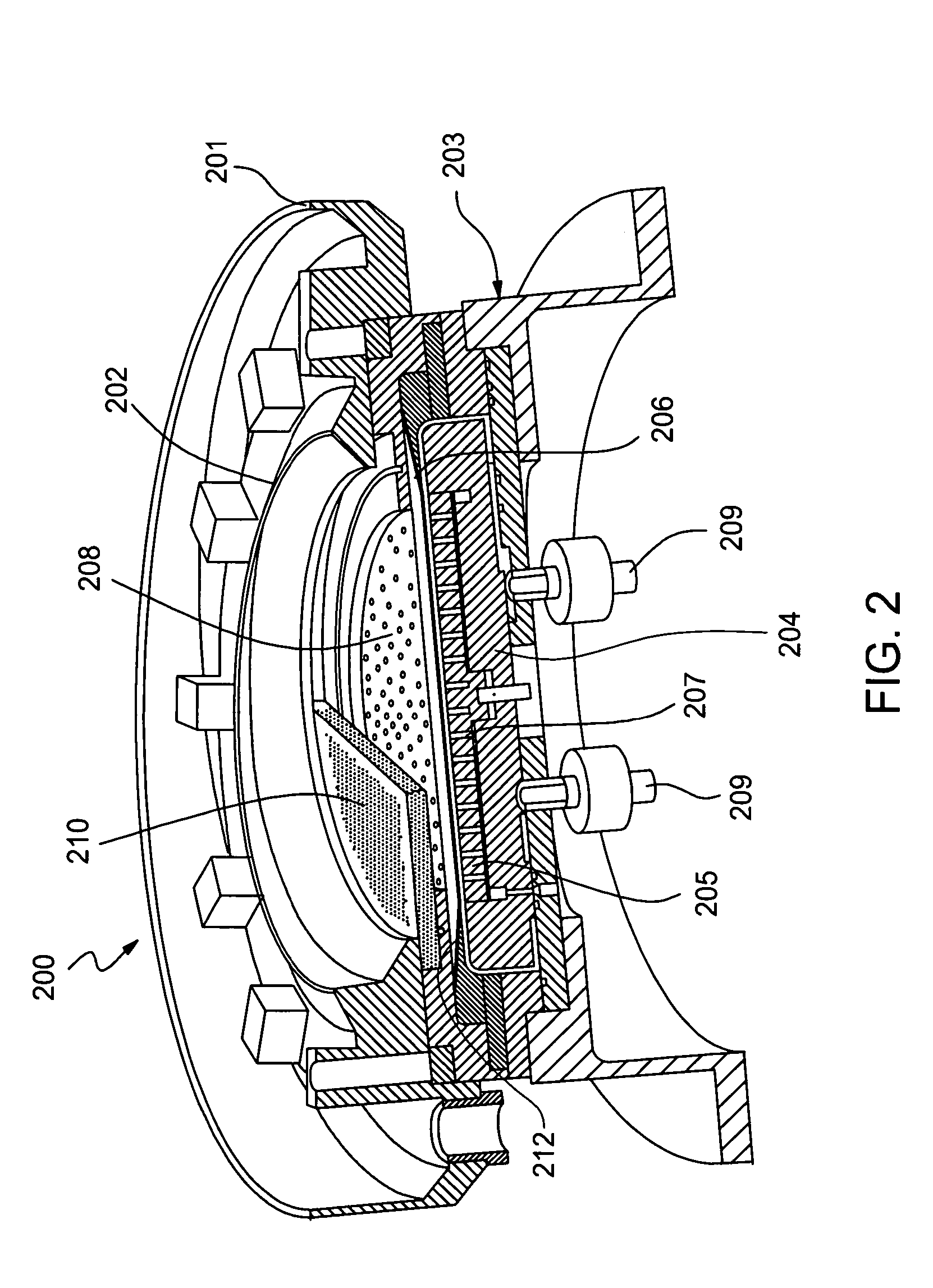Method for electroplating bath chemistry control
a technology of composition and electroplating bath, which is applied in the direction of organic chemistry, electrolysis components, group 5/15 element organic compounds, etc., can solve the problems of voids and plating defects, and the control of the composition or chemistry of the electroplating bath remains a challeng
- Summary
- Abstract
- Description
- Claims
- Application Information
AI Technical Summary
Benefits of technology
Problems solved by technology
Method used
Image
Examples
Embodiment Construction
[0046] To determine the lifetime of a particular electroplating bath solution, a first auxiliary experiment was performed on 500 wafers having a wafer size of 300 mm, wafer feature dimensions of 0.16 .mu.m.times.0.8 .mu.m and aspect ratio of 5:1, using a production current ramp of 5 / 500 (i.e., 5 mA / cm.sup.2 per 500 .ANG.), 10 / 1000, 40 / 6500 resulting in a total plating thickness of 8000 .ANG.. During plating, bath samples were withdrawn from the bath at an interval of about 50 plated wafers. The accelerator additive, namely sulfopropyl disulfide (SPS), was found to be the fastest depleting component in the bath having an initial concentration of about 7.5 ml / l (initial dose) and monotonically decreasing to a concentration of below about 5 ml / l after plating 500 wafers. In comparison, the leveler showed a smaller rate of depletion and the suppressor showed minimal depletion. As the accelerator concentration decreased, the concentration of a breakdown by-product of the accelerator, nam...
PUM
| Property | Measurement | Unit |
|---|---|---|
| Volume | aaaaa | aaaaa |
| Volume | aaaaa | aaaaa |
| Volume | aaaaa | aaaaa |
Abstract
Description
Claims
Application Information
 Login to View More
Login to View More - R&D
- Intellectual Property
- Life Sciences
- Materials
- Tech Scout
- Unparalleled Data Quality
- Higher Quality Content
- 60% Fewer Hallucinations
Browse by: Latest US Patents, China's latest patents, Technical Efficacy Thesaurus, Application Domain, Technology Topic, Popular Technical Reports.
© 2025 PatSnap. All rights reserved.Legal|Privacy policy|Modern Slavery Act Transparency Statement|Sitemap|About US| Contact US: help@patsnap.com



